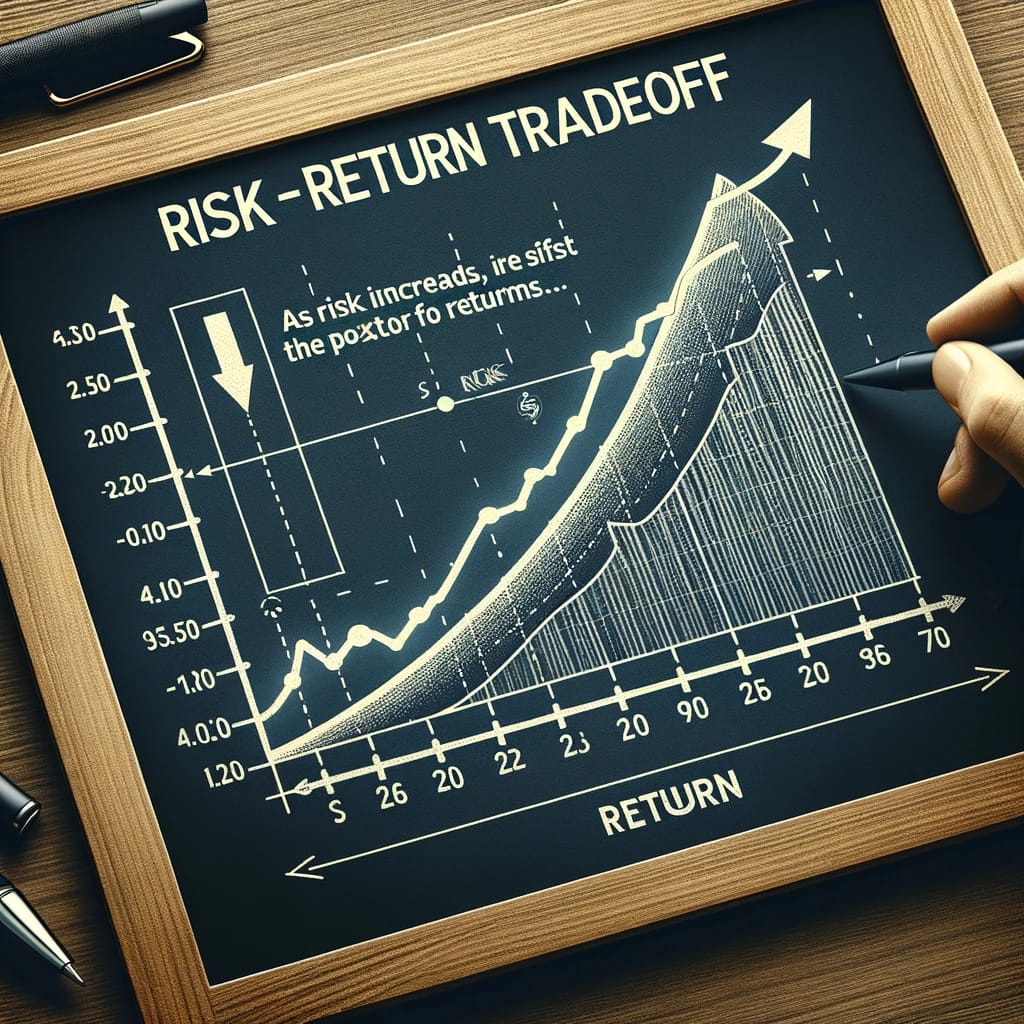
Investing in the financial markets can be both exhilarating and daunting. The promise of substantial returns comes with the peril of potential losses. Understanding the intricate balance between risk and return is crucial for both novice and experienced investors aiming to make informed decisions. This comprehensive guide delves deep into the concepts of risk and return, offering valuable insights and actionable advice to help you navigate the complex world of investing.
The journey of investing is fraught with decisions that directly impact financial outcomes. At the heart of every investment decision is the trade-off between risk and return. Grasping this balance is essential for achieving your financial goals while managing the uncertainty that comes with investing. This article aims to demystify these concepts, providing a structured analysis complete with visual aids to enhance comprehension and engagement.
Understanding Risk and Return
Risk and return are the yin and yang of investing; they are inseparable and define the potential outcome of every investment.
What is Risk?
Risk in investing refers to the probability of receiving returns that are different than expected, including the possibility of losing some or all of the original investment. Various types of risk affect investments in different ways:
- Market Risk: The risk of investments declining in value due to economic developments or other events that affect the entire market.
- Credit Risk: The risk that a borrower will default on any type of debt by failing to make required payments.
- Liquidity Risk: The risk that an investment cannot be sold quickly enough to prevent a loss (or make the desired profit).
What is Return?
Return is the gain or loss on an investment over a specified period, expressed as a percentage of the investment’s initial cost. Returns can be realized through income (in the form of interest or dividends) and capital gains.
The Relationship Between Risk and Return
The fundamental principle in investing is the direct relationship between risk and return. Generally, higher risk is associated with higher potential returns. This relationship is depicted in the “Risk-Return Tradeoff” graph below.
Visual Representation: The Risk-Return Tradeoff
Graph: The Risk-Return Tradeoff Curve
This curve illustrates that as risk increases, the potential for higher returns increases as well. However, it also means there’s a higher chance of experiencing significant losses.

Strategies for Assessing Risk and Return
Assessing risk and return involves a blend of quantitative analysis, market insight, and personal risk tolerance. Here are strategies to consider:
Diversification
Diversification is a risk management strategy that mixes a wide variety of investments within a portfolio. It aims to maximize returns by investing in different areas that would each react differently to the same event.
Asset Allocation
Asset allocation involves dividing an investment portfolio among different asset categories, such as stocks, bonds, and cash. The process depends largely on an individual’s goals, risk tolerance, and investment horizon.
Risk Assessment Tools
Several tools can help investors assess the risk associated with potential investments, including:
- Standard Deviation: Measures the amount of variation or dispersion of a set of values.
- Beta: Measures the volatility of an individual stock in comparison to the market as a whole.
Understanding Return on Investment (ROI)
ROI is a simple, versatile metric used to gauge the profitability of an investment. Calculating ROI involves dividing the net profit by the initial cost of the investment. The result is expressed as a percentage or a ratio.
Case Study: Risk and Return Analysis
To illustrate the concepts of risk and return, let’s consider a simplified case study of two investment options:
- Government Bonds: Considered low risk with an average annual return of 2%.
- Stock Market Investment: Higher risk with an average annual return of 8%.
Table: Investment Options Comparison
| Investment Type | Risk Level | Expected Annual Return |
|---|---|---|
| Government Bonds | Low | 2% |
| Stock Market | High | 8% |
This table highlights the direct relationship between risk and return. Investors seeking higher returns must be willing to accept higher levels of risk.
Understanding the nuances of risk and return is fundamental to making informed investment decisions. By employing strategies such as diversification and asset allocation, investors can manage risk and aim for desirable returns. The use of visual aids like tables and graphs not only clarifies complex information but also enriches the reader’s comprehension of the subject matter. Remember, investing is not about avoiding risk but managing it in a way that aligns with your financial goals and risk tolerance. Engage further by exploring more detailed resources and consider professional advice to tailor your investment strategy to your personal circumstances.
Investing wisely requires a balance of knowledge, strategy, and risk management. Armed with a deeper understanding of risk and return, you’re now better equipped to navigate the investment landscape. Here are additional considerations and strategies to enhance your investing approach:
Embracing a Long-Term Perspective
Investment success often comes to those who adopt a long-term perspective. Short-term market fluctuations can be unsettling, but history shows that markets tend to increase in value over the long term. By staying invested for longer periods, you’re more likely to experience the compound interest effect, which can significantly boost the growth of your investments.
The Importance of Regular Reviews
While adopting a long-term perspective is crucial, it’s equally important to regularly review and adjust your portfolio. Economic conditions, market trends, and personal financial circumstances change. A portfolio that was perfectly balanced for your goals and risk tolerance a year ago may not be ideal today. Regular reviews help ensure that your investments remain aligned with your long-term objectives.
Incorporating Advanced Investment Strategies
As you become more comfortable with basic investment principles, exploring advanced strategies can further optimize your portfolio’s performance:
- Value Investing: This strategy involves buying securities that appear underpriced by some form of fundamental analysis.
- Growth Investing: Focuses on companies expected to grow at an above-average rate compared to their industry or the market as a whole.
- Income Investing: Aims to generate a steady income from investments, often through bonds, dividend-paying stocks, and other income-generating assets.
Mitigating Risks with Alternative Investments
Alternative investments such as real estate, commodities, and hedge funds can provide diversification benefits and reduce overall portfolio risk. These assets often have a low correlation with traditional stock and bond markets, offering protection during market downturns and volatility.
Staying Informed and Educated
Continuous learning is key to successful investing. The financial markets are complex and ever-changing. Staying informed about market trends, economic indicators, and investment strategies can provide a significant advantage. Numerous resources are available, from financial news websites and investment books to podcasts and webinars.
Building a Resilient Investment Portfolio
The journey through the investment landscape is a continuous learning experience. Understanding the intricacies of risk and return is just the beginning. By applying the strategies discussed, including diversification, asset allocation, and embracing a long-term perspective, you can build a resilient investment portfolio capable of weathering market volatility and achieving your financial goals.
Remember, there’s no one-size-fits-all approach to investing. Your financial situation, goals, and risk tolerance are unique. Tailoring your investment strategy to fit these personal factors is crucial for success. Consider seeking advice from financial professionals who can provide personalized guidance based on your individual circumstances.
Engaging with the broader investment community can also enhance your knowledge and understanding. Forums, investment clubs, and social media platforms offer opportunities to connect with fellow investors, share insights, and learn from diverse experiences.
By approaching investing with a well-informed strategy, a clear understanding of risk and return, and a commitment to ongoing education and adaptation, you position yourself to achieve your financial objectives and navigate the complexities of the investment world with confidence.